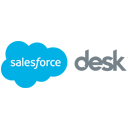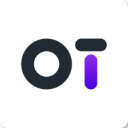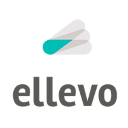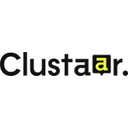Customer Support software: purchase guide
What is a customer support software?
Definition
A customer support software is a professional solution that centralizes multi-channel customer requests and forwards them to the organization's support department (commercial and technical).
Their fields of activity are governed by the ITIL V3 standard.
Before purchase, these solutions allow consumers to request information about the products they are looking at.
After the purchase, they centralize the requests made to the after-sales service:
- Product Use Information
- Assistance and resolution of technical problems (hardware and software)
- Incident and complaint management
How does it work?
The customer support tool collects all customer requests: e-mail, phone, direct chat, social networks. A ticket is created from a form completed online by the customer or internally by the service advisor. It is assigned to an employee (sales manager, technical service, etc.) to be resolved:
- Sending an e-mail with information about a product, etc.
- Schedule an appointment
- Solving a technical problem internally
- Returning a product
- Etc.
The customer who created the ticket can track the progress of his request online. It is automatically notified when it is resolved.
Each agent has an online dashboard. He accesses it via his web browser to track, resolve and close the tickets assigned to him.
The organization's managers can monitor in real time the evolution of customer satisfaction on a dashboard: observe statistics and generate reports.
What are the main features of customer support tools?
We can discuss the functionalities of this software in chronological order: from customer-initiated contact to managers' analysis of service performance.
Request management
The customer contacts the after-sales service and carries out actions:
- He completes a form and categorizes it
- It answers automatic questions prior to a telephone call
- It selects answers from a selection proposed by a Chatbot
Based on the actions he has carried out, the request is redirected to the right contact person within the after-sales service.
If the service member cannot directly solve the customer's problem, he/she creates a ticket internally, categorizes it and forwards it to the department in charge of the category. The service and the customer are notified of the creation of the ticket.
Online requests are systematically ticketed and automatically forwarded to the managers.
Ticket processing
These tools work on the same principle as a task manager.
The ticket system allows helpdesks to improve customer relations through requests provided in a single ticket. This provides better visibility of requests for assistance and offers a more effective deployment of actions. Ticketing software helps customers to contact good support and optimizes customer relations.
In addition, agents have access to the most important customer information. All this helps to meet needs and increase productivity in solving customer problems.
Service members have online access to a dashboard on which they can view all the tickets allocated to them.
For each ticket, they perform correlated actions and close them:
- Sending an information e-mail: technical and/or functional questions
- Schedule an appointment
- Answer to a dissatisfied customer
- Returning a defective product
- Reimbursement of a customer
- Solving a technical problem, a malfunction
- Etc.
Tickets are archived, an automatic notification is sent to the customer.
When the resolution of a ticket involves several employees, ticketing tools allow related tasks to be scheduled and assigned. The ticket holder is automatically notified when the task is completed.
Community Spaces
Some customer support tools have a community space that allows Internet users to interact with each other and with internal experts:
- Exchange information, experiences, help each other, etc.
- Create a collaborative FAQ with recurring questions
A community management tool centralizes and responds to customers' multi-channel messages.
A Web widget is an interesting way to chat live with your customers. A service interface centralizes all conversations. A predictive analysis tool suggests answers, the user just has to click on the suggestions to send them to the chat room.
Customer satisfaction monitoring
A dashboard allows managers to view current tickets by the operator and obtain regular reporting of operations:
- Number of requests processed
- Recurrence by type of demand (functional, technical, regulatory)
- Average time to answer and close tickets
- The average number of interactions per ticket
- Etc.
With these KPIs, they determine the levers for improving customer satisfaction and transforming them into brand ambassadors.
Interoperability with internal CRM software
Synchronizing the customer support tool with the internal Customer Relationship Management tool provides access to the records of customers data who have opened a ticket. In addition, the tool centralizes and stores all interactions with customers (phone, chat, e-mail, social networks, etc.).
Tickets are recorded in the CRM to ensure tracking, traceability and archiving of support tickets.
Who uses customer support software?
Customer support tools are perfectly adapted to SMEs and key accounts.
E-commerce companies are the main targets of customer support tool publishers:
- Pre-purchase support increases the average shopping basket, increases the number of sales, provides "in-store" advice
- Behavioral targeting makes it possible to intervene at key moments in the customer journey
- Technical support allows us to respond to all post-purchase requests
Internally, they are used by all after-sales service managers:
- Support, technical assistance, helpdesk technicians, support technicians
- Functional support
- Call Center Members: Online Support
Why use customer support software in the company?
Although they are central to improve the customer experience and customer satisfaction rate, customer support tools have certain disadvantages.
Advantages
- Software designed to meet Internet users' expectations in terms of UX
- Reactivity of the support
- Customer loyalty
- Collaboration between the various internal stakeholders of the organization
- Integrate recurring problems into a development roadmap
- Involve clients in the internal process of the organization
- Interoperability with the organization's internal ERP
Disadvantages
- The semantic analysis of bots does not replace human interaction: the contextualization of requests can be misinterpreted by the bot
- It may be misunderstood by a client to have to answer several questions before successfully reaching a natural person



















